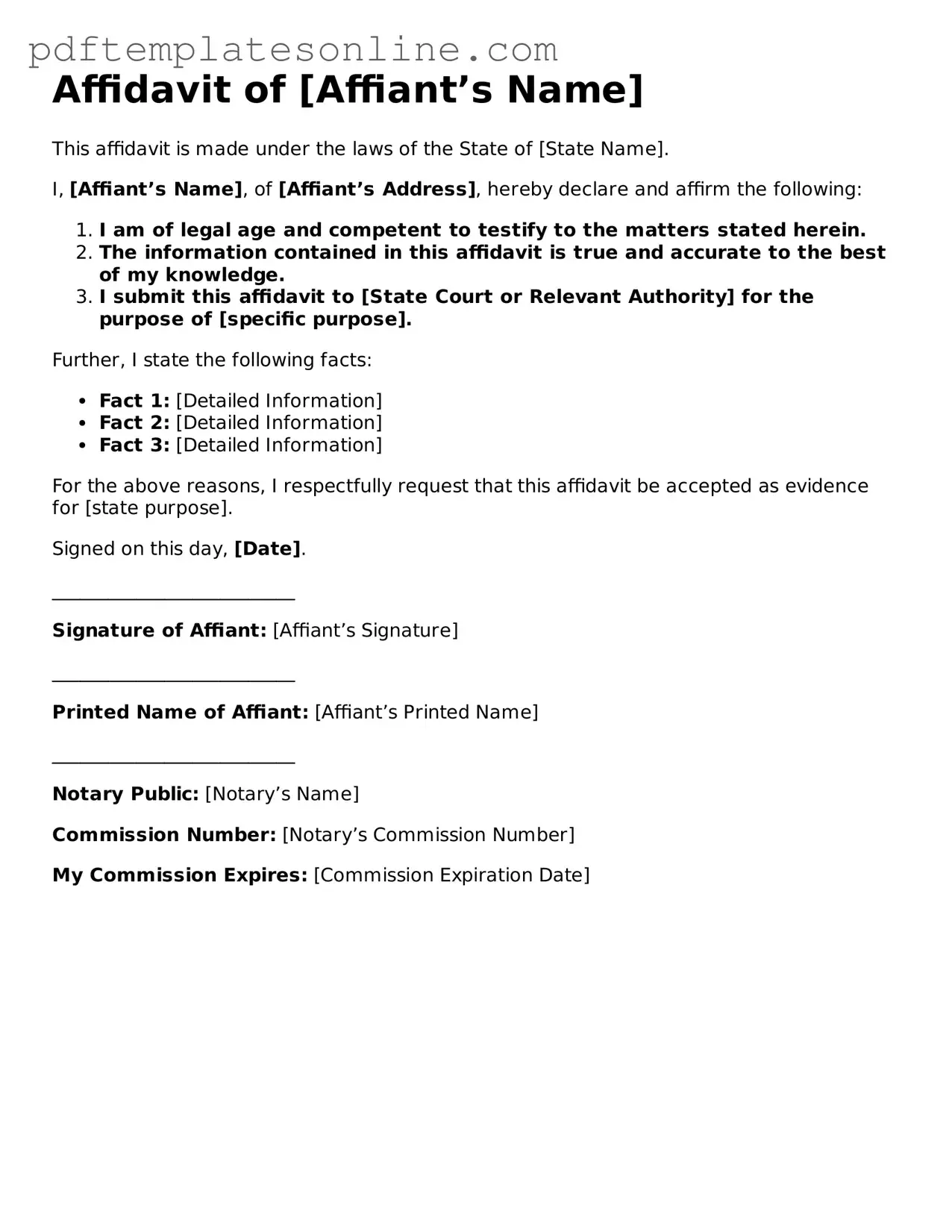Filling out an Affidavit form can seem straightforward, but many people make common mistakes that can lead to complications. One frequent error is not providing enough detail. Affidavits require specific information to support the claims being made. If the details are vague or incomplete, the affidavit may not hold up in court.
Another common mistake is failing to sign the affidavit in front of a notary public. A signature alone is not sufficient; it must be notarized to verify the identity of the signer and the authenticity of the document. Without this step, the affidavit may be considered invalid.
People often overlook the importance of including dates. Dates are crucial for establishing a timeline of events. If the affidavit lacks clear dates, it can create confusion and weaken the overall argument being presented.
Additionally, some individuals forget to include their contact information. Providing a phone number or email address allows for easy communication if the court or other parties need to reach out for clarification or additional information.
Another mistake is using unclear language. Legal documents require precise wording. Using ambiguous terms can lead to misinterpretation of the affidavit's intent. It's important to be clear and direct in your statements.
Many people also neglect to check for typos or grammatical errors. While these may seem minor, they can affect the credibility of the document. Taking the time to proofread can help ensure that the affidavit appears professional and reliable.
Some individuals fail to include all necessary exhibits or supporting documents. If the affidavit references other documents, those should be attached to provide context and evidence for the claims made. Omitting these can weaken the affidavit's impact.
People sometimes forget to follow the specific instructions provided for the affidavit. Each court may have its own requirements regarding format and content. Not adhering to these guidelines can lead to delays or rejections.
Lastly, many individuals do not keep a copy of the completed affidavit for their records. Having a copy can be useful for future reference or if any questions arise later. It's always a good practice to retain important documents.
